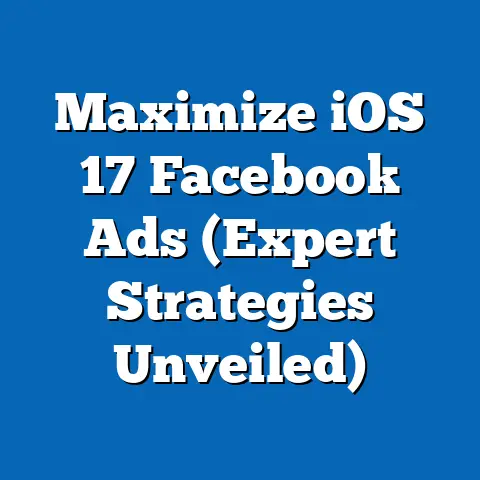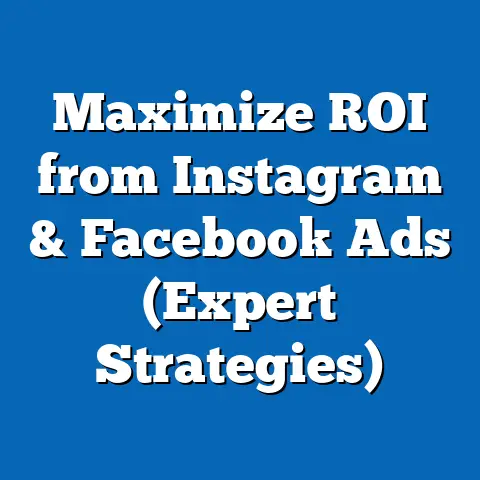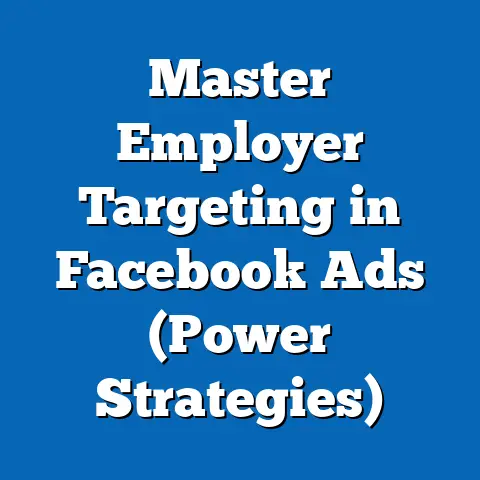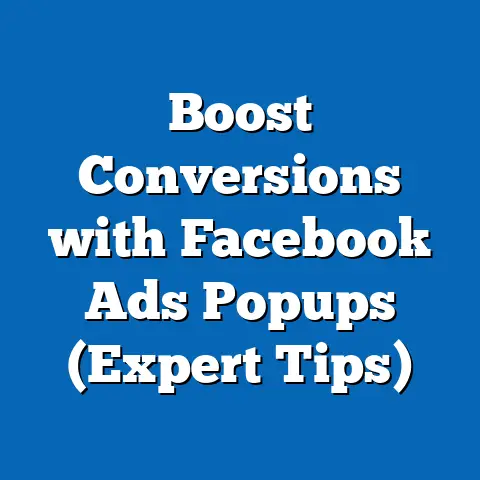Does Facebook Call You for Ads? (Insider Secrets Revealed)
Have you ever wondered if Facebook is listening to your conversations, only to serve you eerily relevant ads moments later? The phenomenon of hyper-targeted advertising on social media platforms like Facebook (now Meta) has sparked curiosity, concern, and even conspiracy theories among users worldwide. This article dives deep into the mechanisms behind Facebook’s ad targeting, exploring whether the platform “calls” you for ads, metaphorically or otherwise, by leveraging personal data, behavioral tracking, and cutting-edge technology.
Facebook, launched in 2004 by Mark Zuckerberg as a college networking site, has grown into a global behemoth with over 2.9 billion monthly active users as of 2023. Its advertising model, which generates billions in revenue annually, is built on an intricate system of user data collection and algorithmic precision. This raises critical questions about privacy, ethics, and the societal implications of such targeted marketing.
In this comprehensive analysis, we’ll uncover the insider secrets of Facebook’s ad ecosystem, exploring the historical context of digital advertising, the technological and social factors driving its evolution, and the broader impact on individuals and society. By blending data-driven research with expert perspectives, we aim to demystify how Facebook’s ad targeting works and what it means for users across generations.
Section 1: The Evolution of Advertising in the Digital Age
Advertising has always been about reaching the right audience with the right message at the right time. Before the internet, advertisers relied on broad demographics—age, gender, location—to place ads in newspapers, radio, or television, often with limited precision. The digital revolution, however, changed everything.
The late 1990s and early 2000s marked the rise of online advertising, with banner ads and pop-ups becoming early tools for capturing user attention. Google’s introduction of AdWords in 2000 pioneered search-based advertising, using keywords to target users based on intent. Facebook entered the game in 2007 with its first ad platform, allowing businesses to reach users based on profile information like interests and location—a game-changer in personalization.
By 2012, Facebook had refined its approach with the introduction of Custom Audiences, enabling advertisers to upload customer data for targeted campaigns. This era also saw the rise of mobile usage, with smartphones providing a constant stream of location and behavioral data. Today, Facebook’s ad system uses machine learning to analyze billions of data points, predicting user preferences with uncanny accuracy.
This historical shift from mass marketing to hyper-personalized ads reflects broader societal trends: the growing reliance on technology, the commodification of personal data, and the erosion of traditional privacy boundaries. As we’ll explore, these changes have profound implications for how different generations perceive and interact with advertising.
Section 2: How Facebook Targets You for Ads—Insider Mechanisms Revealed
So, does Facebook “call” you for ads? Not in the literal sense of eavesdropping on phone calls (a common urban myth), but through a sophisticated web of data collection and algorithmic targeting. Let’s break down the key mechanisms behind this process.
1. Data Collection: The Foundation of Targeting
Facebook gathers data from multiple sources, including your profile (age, gender, interests), activity (likes, comments, shares), and even off-platform behavior via tracking pixels and third-party partnerships. For instance, if you visit a retailer’s website, a Facebook pixel might log that activity, linking it back to your account. According to a 2021 report by the Pew Research Center, 74% of users are unaware of the extent to which their data is tracked across platforms.
2. Algorithmic Profiling: Predicting Your Behavior
Once data is collected, Facebook’s algorithms create a detailed user profile, categorizing you into audience segments based on predicted interests and behaviors. Machine learning models analyze patterns—such as time spent on certain posts or purchase history—to determine which ads you’re most likely to engage with. A 2019 study by the University of Southern California found that these algorithms can predict user preferences with over 80% accuracy.
3. Lookalike Audiences and Social Connections
Facebook also uses your social network to refine targeting. If you’re connected to friends who engage with a particular brand, the platform may infer shared interests and show you similar ads. Lookalike Audiences allow advertisers to target users who resemble their existing customers, amplifying reach through inferred data.
4. The Myth of Microphone Spying
A persistent rumor suggests Facebook listens to conversations via smartphone microphones to serve relevant ads. While no concrete evidence supports this claim, the platform’s access to location data, search history, and app usage can create the illusion of eavesdropping. Meta has repeatedly denied using microphone data for ads, citing privacy policies and legal constraints.
These mechanisms highlight the power of data in modern advertising, but they also raise ethical questions about consent and transparency. As we’ll see, generational differences play a significant role in how users perceive and respond to such practices.
Section 3: Generational Perspectives on Facebook Ads
Generational cohorts—shaped by unique historical, technological, and cultural contexts—interact with Facebook’s ad ecosystem in distinct ways. While it’s crucial to avoid overgeneralization, research reveals notable trends in attitudes toward privacy, technology, and consumerism across age groups.
1. Baby Boomers (Born 1946-1964)
Baby Boomers, who grew up in a pre-digital era, often exhibit skepticism toward online platforms like Facebook. Having witnessed the rise of mass media advertising, they tend to value privacy and are more likely to question data collection practices. A 2022 AARP survey found that 62% of Boomers express concern over how social media platforms use their personal information, often limiting their engagement with ads.
However, Boomers are not immune to targeted marketing. Many use Facebook to stay connected with family, making them susceptible to ads for health products, travel, or nostalgia-driven content. Their limited tech-savviness can also lead to accidental data sharing, amplifying privacy risks.
2. Generation X (Born 1965-1980)
Gen X, often described as the “bridge” generation, experienced the transition from analog to digital. They are generally more tech-literate than Boomers but less immersed than younger cohorts. Research by Nielsen in 2021 indicates that Gen X users are pragmatic about ads, often engaging with content related to career, finance, or family needs while remaining wary of overt data exploitation.
This generation’s balanced perspective often leads to selective interaction with Facebook ads. They’re likely to click on promotions for practical products but may resist overly intrusive or irrelevant campaigns.
3. Millennials (Born 1981-1996)
Millennials, who came of age alongside the internet, are digital natives comfortable with social media. They are a prime target for Facebook ads, given their significant online presence and purchasing power. A 2020 Deloitte study found that 55% of Millennials have made purchases influenced by social media ads, often valuing convenience and personalization.
Yet, Millennials are also vocal about privacy concerns, having witnessed high-profile data scandals like Cambridge Analytica in 2018. They tend to demand transparency and are more likely to adjust privacy settings or use ad blockers.
4. Generation Z (Born 1997-2012)
Gen Z, the first fully digital generation, views social media as an integral part of life. They are highly responsive to visual, influencer-driven ads on platforms like Instagram (owned by Meta), often prioritizing authenticity over privacy. According to a 2023 Pew Research Center report, 68% of Gen Z users follow brands on social media, making them a lucrative audience for advertisers.
However, their constant exposure to technology also makes them savvy about data manipulation. Many are quick to spot inauthentic ads and value brands that align with social causes or personal values.
These generational nuances underscore the diversity of user experiences on Facebook. While younger cohorts may embrace targeted ads as a natural part of digital life, older users often grapple with trust and privacy concerns—a tension that shapes broader societal debates.
Section 4: Societal Implications of Facebook’s Ad Targeting
The precision of Facebook’s ad system has far-reaching implications beyond individual user experiences. It influences culture, economics, and even democracy, raising critical questions about power, ethics, and equity.
1. Cultural Impact: Shaping Consumer Behavior
Facebook ads don’t just reflect user preferences; they actively shape them. By curating content through algorithms, the platform can influence trends, reinforce biases, or promote specific lifestyles. For instance, repeated exposure to luxury or fitness ads may create societal pressure to conform to certain ideals, particularly among impressionable younger users.
This phenomenon, often called “algorithmic culture,” highlights the platform’s role in defining modern values. A 2021 study by the University of Oxford noted that social media ads contribute to “echo chambers,” where users are repeatedly exposed to similar ideas, potentially limiting cultural diversity.
2. Economic Influence: Redefining Marketing
Economically, Facebook’s ad model has democratized marketing, allowing small businesses to compete with larger corporations through affordable, targeted campaigns. As of 2023, Meta reported over 10 million active advertisers on its platforms, many of whom rely on precise targeting to reach niche audiences.
However, this system also perpetuates inequality. Larger companies with bigger budgets can dominate ad spaces, while data-driven targeting may exclude marginalized groups with less online visibility. This creates a digital divide, where economic power concentrates among those who can afford sophisticated ad strategies.
3. Political and Ethical Concerns: The Dark Side of Targeting
Perhaps the most significant societal impact lies in the political sphere. The Cambridge Analytica scandal revealed how Facebook data could be weaponized to influence elections, with targeted ads spreading misinformation or polarizing content. A 2020 report by the Center for Strategic and International Studies warned that such practices threaten democratic processes by manipulating voter behavior.
Ethically, the lack of transparency in data collection remains a pressing issue. While Meta has introduced tools like the “Why Am I Seeing This Ad?” feature, many users remain unaware of how their information is used. This opacity fuels distrust, particularly among older generations less accustomed to digital trade-offs.
4. Privacy Across Generations: A Growing Divide
The generational divide in privacy attitudes exacerbates societal tensions. Younger users, desensitized to data sharing, often accept targeted ads as a necessary evil for free services. In contrast, older generations may feel alienated or exploited, advocating for stricter regulations like the European Union’s General Data Protection Regulation (GDPR) implemented in 2018.
This divide shapes public policy debates, with governments worldwide grappling with how to balance innovation and privacy. The outcome of these discussions will likely influence the future of digital advertising and its societal footprint.
Section 5: Technological and Social Factors Driving Ad Personalization
Facebook’s ad targeting doesn’t exist in a vacuum; it’s fueled by broader technological and social trends that have redefined human interaction in the 21st century. Understanding these factors provides insight into why and how the platform operates as it does.
1. Technological Advancements: The Power of AI and Big Data
The backbone of Facebook’s ad system is artificial intelligence (AI), which processes vast datasets to predict user behavior. Machine learning algorithms evolve in real-time, adapting to new patterns and refining ad delivery. Coupled with big data—billions of user interactions logged daily—this technology enables unprecedented personalization.
2. Social Shifts: The Rise of Digital Connectivity
Socially, the shift toward constant connectivity has normalized data sharing. Platforms like Facebook thrive on user engagement, encouraging oversharing through features like Stories, Groups, and Events. This cultural acceptance of digital exposure—especially among Millennials and Gen Z—fuels the ad machine, as users voluntarily provide the raw material for targeting.
At the same time, growing awareness of data breaches and surveillance capitalism (a term coined by scholar Shoshana Zuboff) has sparked pushback. Social movements advocating for digital rights, coupled with high-profile lawsuits against Meta, reflect a countertrend toward privacy consciousness that may reshape ad practices in the future.
3. Economic Pressures: The Free Service Trade-Off
Economically, Facebook’s business model relies on advertising revenue to sustain free access for users. In 2022, Meta reported $114.9 billion in ad revenue, accounting for nearly 97% of its total income. This financial incentive drives aggressive data collection, as more precise targeting translates to higher ad value.
For users, this creates a trade-off: free access to a powerful social tool in exchange for personal data. While younger generations often accept this bargain, older users and privacy advocates question whether the cost is too high, highlighting a fundamental tension in the digital economy.
Section 6: Workplace and Cultural Implications of Targeted Ads
Beyond individual and societal impacts, Facebook’s ad targeting influences specific domains like the workplace and cultural production, with varying effects across generations.
1. Workplace Dynamics: Marketing and Recruitment
In the workplace, Facebook ads have become a tool for both marketing and recruitment. Companies use targeted campaigns to attract talent, often tailoring job ads based on user demographics or interests. A 2021 LinkedIn report noted that 48% of recruiters leverage social media platforms like Facebook for candidate outreach.
However, this practice can perpetuate bias. Algorithms may unintentionally exclude certain groups (e.g., older workers or minorities) if historical data reflects existing disparities. This raises ethical concerns about fairness and diversity in hiring, particularly as younger, tech-savvy generations dominate online spaces.
2. Cultural Production: Influencers and Content Creation
Culturally, Facebook ads have empowered content creators and influencers, who rely on targeted promotion to build audiences. This democratizes cultural production, allowing diverse voices to emerge—especially among Gen Z, who often turn hobbies into careers via social media.
Yet, the reliance on algorithmic visibility can also homogenize content. Creators may cater to popular trends to maximize ad reach, potentially stifling originality. This tension between creativity and commercialization shapes modern cultural landscapes, with long-term implications for how art and media evolve.
Section 7: Forward-Looking Insights and Uncertainties
As we look to the future, the trajectory of Facebook’s ad targeting remains uncertain, shaped by technological innovation, regulatory pressures, and shifting user attitudes. Several trends and challenges stand out.
1. Regulatory Evolution: Balancing Innovation and Privacy
Governments worldwide are tightening data privacy laws, with initiatives like GDPR and the California Consumer Privacy Act (CCPA) setting precedents for user control. Meta has already faced fines totaling billions for data misuse, and future regulations may limit ad targeting capabilities. How the platform adapts—whether through alternative revenue models or enhanced transparency—will define its role in the digital economy.
2. Technological Disruption: The Next Frontier of Ads
Emerging technologies like augmented reality (AR) and the metaverse (Meta’s ambitious vision) could redefine ad personalization. Immersive environments may offer new data streams, raising fresh privacy concerns. At the same time, advancements in AI could make targeting even more precise, potentially deepening user engagement or backlash.
3. Generational Shifts: Evolving User Expectations
As Gen Z and future cohorts dominate social media, their expectations for authenticity and ethical practices may pressure platforms to rethink ad strategies. Conversely, aging populations may demand stronger privacy protections, creating a complex landscape for advertisers. Balancing these diverse needs will be a key challenge for Meta and its competitors.
4. The Ethical Imperative: Trust as Currency
Ultimately, the sustainability of Facebook’s ad model hinges on trust. High-profile scandals and growing awareness of data exploitation have eroded user confidence, particularly among older generations. Rebuilding trust through transparency, user control, and ethical practices will be critical to maintaining relevance in an increasingly skeptical digital world.
Conclusion: Decoding the Call of Facebook Ads
Facebook doesn’t “call” you for ads in the literal sense, but its sophisticated targeting system—built on data, algorithms, and behavioral insights—creates an intimate connection between user and advertisement. From its historical roots in the early days of digital marketing to its current role as a cultural and economic force, the platform exemplifies the power and peril of personalized advertising.
Across generations, responses to this system vary, shaped by differing experiences with technology, privacy, and consumerism. While younger users often embrace the convenience of targeted ads, older cohorts grapple with trust and ethical concerns—a divide that mirrors broader societal tensions. The implications of this dynamic extend to culture, economics, politics, and beyond, challenging us to rethink the balance between innovation and individual rights.
Looking ahead, the future of Facebook’s ad ecosystem is fraught with uncertainty, as regulatory, technological, and cultural forces collide. What remains clear is the need for a nuanced understanding of how such systems operate and their impact on our lives. By fostering dialogue and advocating for transparency, we can ensure that the digital age serves not just advertisers, but users of all generations seeking connection in an increasingly complex world.






